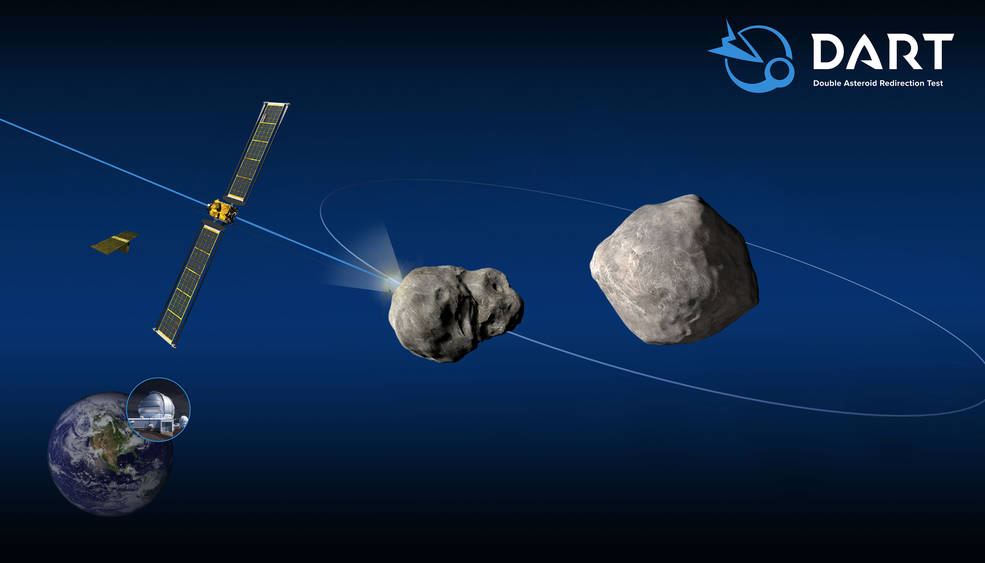NASA’s mission to test out a technique to deflect asteroids is headed to a near-Earth asteroid (NEA) that the Arecibo Observatory helped identify.
UCF manages the U.S. National Science Foundation facility under a cooperative agreement. Despite the telescope’s collapse in 2020, the data collected from Arecibo has played an invaluable role in past and ongoing space missions and could hold clues for future missions, says Flaviane Cristine Faria Venditti, head of Arecibo’s Planetary Radar Science Group.
Information from observations in November 2003 helped NASA select the target of the Double Asteroid Redirection Test (DART) mission, which expects to demonstrate the kinetic impact technique for asteroid deflection. Radar data obtained at Arecibo led to the confirmation that the asteroid 65803 Didymos has a small moon, Dimorphos, paving the path for this asteroid system to become the target for the DART mission. DART is scheduled to launch Wednesday. Scientists then used the radar data to determine the shape, size, spin and surface makeup of the asteroid its moon.
“The goal of the mission is to understand how an impact of this moon ( about 500 feet in size, close to the size that is considered a “potentially hazardous asteroid” at 450 feet or bigger) changes its orbital period, so in the future we will know if using a ‘kinetic impactor’ is a good way to divert a similar asteroid that might be on a collision course with Earth,” Venditti says. “While we know that this asteroid system poses no risk to Earth, what is learned from the mission could help us understand how, when, and where to hit a potentially dangerous asteroid.”

There are hundreds of NEAs that could potentially pose a danger to Earth. Each year several close flybys are observed, which is why NASA has a team that monitors these asteroids. Arecibo played a role in analyzing NEOs since the mid-90s, observing up to 126 objects per year. Congress made NEOs a priority when it directed NASA in 2005 to seek out and characterize at least 90% of near-Earth objects larger than 140 meters by 2020. The information provided helps NASA determine which objects pose significant risks and when and what to do to mitigate them. NASA officials can also use the information to determine which objects are the most viable for science missions.
Radar observations obtained at the Arecibo Observatory have refined the orbits of more than 850 NEAs, as well as characterized many of their shapes, sizes, spins and surfaces. It was also invaluable in confirming the existence of NEAs with their own moons (i.e., binary and triple asteroid systems). This is not the first time Arecibo data has helped identify a NASA mission target. Data from Arecibo was also used to select asteroid Bennu, the target of the OSIRIS-REx mission which is bringing an asteroid sample to Earth. UCF Pegasus Professor of Physics Humberto Campins is part of that mission.
Arecibo data has also been used to plan for NASA’s upcoming Psyche, Janus, and JAXA’s Destiny+ missions.
The launch is scheduled for 1:20 a.m. ET on November 24 aboard a SpaceX Falcon 9 rocket from Vandenberg Space Force Base in California.




